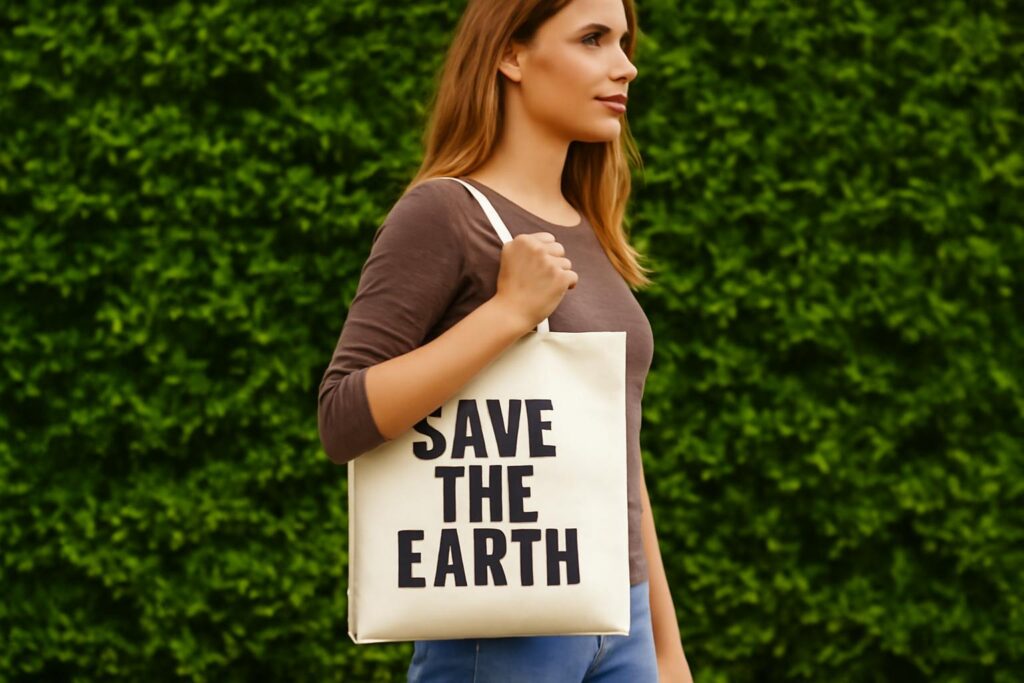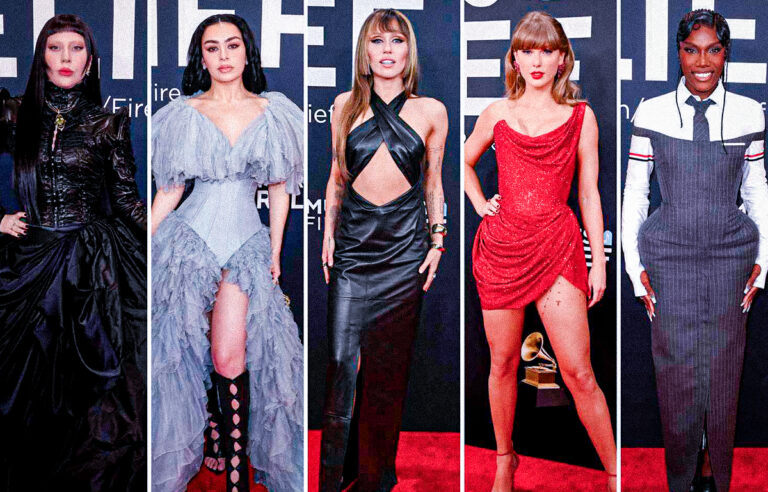Introduction
Sustainable fashion is more than just a trend; it’s a movement that’s changing the way we approach clothing. With the rise of fast fashion, consumers have become accustomed to buying inexpensive, disposable garments. However, the environmental impact of this industry is undeniable. From overproduction to pollution, fast fashion has wreaked havoc on the planet. As awareness grows, people are seeking ways to shop smarter, without compromising their style.
In this guide, we’ll explore how to shop for eco-friendly fashion while still maintaining your unique style. Whether you’re new to sustainable fashion or looking to refine your wardrobe, this article will provide practical tips, brand suggestions, and much-needed inspiration to help you build a more sustainable wardrobe.
What is Sustainable Fashion?
Sustainable fashion refers to clothing, shoes, and accessories that are designed, manufactured, distributed, and used in ways that are more environmentally friendly and socially responsible. It focuses on reducing the environmental impact of fashion production, ensuring that workers are treated fairly, and encouraging more conscious consumption.
Key principles of sustainable fashion include:
-
Eco-Friendly Materials: Choosing fabrics and materials that have a lower environmental impact.
-
Ethical Labor Practices: Ensuring workers are paid fairly and work in safe conditions.
-
Reducing Waste: Creating clothing that lasts longer, is recyclable, or can be repurposed.
-
Transparency: Brands that openly share information about their sourcing and production processes.
The Environmental Impact of Fast Fashion
Fast fashion is responsible for a huge amount of waste, pollution, and carbon emissions. The industry encourages consumers to buy cheaply made garments that are worn only a few times before being discarded. Here are some of the key environmental issues tied to fast fashion:
-
Carbon Footprint: The fashion industry is the second-largest polluting industry in the world, contributing more than 10% of global carbon emissions.
-
Water Waste: It takes over 2,700 liters of water to produce a single cotton t-shirt, and a significant portion of this water is wasted in dyeing and finishing processes.
-
Landfills: More than 92 million tons of textile waste is generated each year, most of which ends up in landfills.
Benefits of Sustainable Fashion
Switching to sustainable fashion offers numerous benefits, both for the environment and for you as a consumer:
-
Positive Environmental Impact: By choosing sustainable fabrics, you help reduce waste and lower the demand for new resources. Sustainable fashion supports eco-friendly manufacturing processes that require less water and energy.
-
Ethical Labor Practices: Many sustainable brands prioritize fair wages, safe working conditions, and labor rights, making them a better choice for supporting ethical treatment of workers.
-
Durability and Longevity: Sustainable clothing tends to be of higher quality, meaning it will last longer, which ultimately saves you money in the long run.
-
Promotes Creativity: Sustainable fashion encourages individuality and creativity. Unlike mass-produced clothing, sustainable fashion often allows for more unique, one-of-a-kind pieces that reflect personal style.
Eco-Friendly Materials in Fashion
One of the easiest ways to shop sustainably is to choose clothing made from eco-friendly materials. These fabrics have a smaller environmental footprint compared to conventional materials like polyester, nylon, and conventional cotton. Some popular eco-friendly fabrics include:
-
Organic Cotton: Grown without synthetic pesticides and fertilizers, organic cotton is much less harmful to the environment compared to conventional cotton farming.
-
Hemp: Hemp is a highly sustainable plant that requires little water, grows quickly, and does not require pesticides.
-
Recycled Materials: Fabrics like recycled polyester, made from post-consumer plastic bottles, or recycled cotton, help reduce textile waste.
-
Tencel: A fabric made from sustainably sourced wood pulp, Tencel is biodegradable and produced in a closed-loop process that minimizes waste.
-
Piñatex: A revolutionary alternative to leather made from pineapple leaf fibers.
By choosing clothing made from these materials, you can reduce your environmental impact while still looking stylish.
Ethical Fashion Brands to Know
Supporting ethical fashion brands is one of the best ways to shop sustainably. These brands prioritize the well-being of both the planet and the people who make their clothing. Some well-known ethical fashion brands include:
-
Patagonia: Known for its commitment to sustainability and environmental activism, Patagonia produces high-quality, eco-friendly clothing.
-
Everlane: Transparent pricing and ethical manufacturing practices make Everlane a go-to for conscious consumers.
-
Reformation: This brand uses sustainable fabrics and practices and is known for its trendy, feminine designs.
-
Allbirds: Allbirds creates eco-friendly shoes and apparel made from renewable resources like merino wool and eucalyptus trees.
When shopping for sustainable fashion, look for brands that are committed to eco-friendly materials, ethical labor practices, and transparency in their supply chains.
How to Shop Eco-Friendly Without Compromising Style
It’s a common misconception that sustainable fashion is boring or out of date. In reality, you can build a wardrobe that’s both stylish and sustainable. Here are some tips:
-
Focus on Timeless Pieces: Invest in high-quality, versatile items that can be styled in different ways and will never go out of fashion. A well-made blazer, pair of jeans, or classic little black dress can be worn for years.
-
Mix and Match: Sustainable fashion is all about creating a wardrobe that you love and that works together. Choose pieces that you can mix and match, which will help you create new outfits without constantly buying new clothing.
-
Set a Shopping Goal: Instead of impulsively buying fast fashion, set a shopping goal where you aim to buy fewer, higher-quality items over time.
-
Stay True to Your Personal Style: Just because something is sustainable doesn’t mean it’s not stylish. Choose items that fit your style and make you feel good. Sustainable fashion doesn’t mean sacrificing personality or flair.
The Role of Secondhand and Vintage Shopping
One of the most effective ways to shop sustainably is by embracing secondhand and vintage clothing. By buying pre-loved clothes, you’re not only saving money but also contributing to reducing the demand for new textiles. Secondhand shopping helps to extend the lifecycle of garments, reducing waste and the carbon footprint of the fashion industry.
Here’s why secondhand shopping is such a game-changer:
-
Reduces Textile Waste: When you buy secondhand, you keep clothes from ending up in landfills, helping reduce the overproduction of textiles.
-
Lower Environmental Impact: Purchasing used clothing means no new resources are needed to produce new garments. This results in less water consumption, reduced energy use, and lower carbon emissions.
-
Unique Pieces: Vintage clothing offers one-of-a-kind pieces that are not only environmentally friendly but also stylish and unique.
-
Affordable: Secondhand clothing can be a lot cheaper than buying new, especially when you find high-quality or designer items at thrift stores or online marketplaces.
Tips for Thrifting:
-
Know What to Look For: Be mindful of fabric quality and condition. High-quality fabrics like wool, leather, and cotton tend to age better than cheaper materials.
-
Shop at Thrift Stores and Online Marketplaces: Popular platforms like Depop, Poshmark, ThredUp, and eBay make it easy to find stylish secondhand items from the comfort of your home.
-
Repurpose Old Clothing: If you can’t find what you’re looking for, consider altering or repurposing old garments in your wardrobe to create something fresh.
The Importance of Clothing Care and Repair
Taking care of your clothes can significantly extend their lifespan, reduce waste, and save money. Rather than tossing clothes that show signs of wear, a few simple repairs can help keep your favorite items looking new for years.
Here are a few ways to care for your clothes and keep them in top shape:
-
Proper Washing Techniques:
-
Cold Water Washing: Washing clothes in cold water uses less energy and helps preserve the fabric’s color and structure.
-
Gentle Detergents: Use eco-friendly detergents that are biodegradable and free from harsh chemicals.
-
Air Drying: Air-dry clothes whenever possible instead of using a tumble dryer, which consumes a lot of energy.
-
-
Mending Clothes:
-
Sewing on Buttons: A missing button doesn’t mean the end of your favorite shirt. Learn simple sewing skills to replace buttons or fix small tears.
-
Darning Socks: Rather than throwing out socks with holes, try darning them to keep wearing them.
-
Patchwork: Patches can be a stylish and functional way to repair jeans, jackets, or other clothing.
-
-
Fabric Care:
-
Avoid Overwashing: Washing clothes too frequently can lead to wear and tear. Spot clean or air out clothes between washes to maintain their quality.
-
Ironing and Steaming: Be gentle with fabrics while ironing or steaming to avoid damage and preserve their structure.
-
By maintaining your clothes, you contribute to the longevity of your garments, reducing the need for constant shopping and ultimately helping the planet.
Building a Sustainable Wardrobe: A Step-by-Step Guide
Creating a sustainable wardrobe doesn’t have to happen overnight. It’s a journey that involves conscious decision-making and mindfulness about your clothing purchases. Here’s a step-by-step guide to help you get started:
-
Assess Your Current Wardrobe:
Start by evaluating what you already own. Identify items you wear frequently and those you no longer use. Consider donating or selling clothes that are in good condition but no longer fit your style or needs. -
Make Conscious Shopping Choices:
When you do need new clothing, choose sustainable materials, ethical brands, or secondhand options. Research the brand’s practices and ensure they align with your values. -
Invest in Timeless Pieces:
Focus on building a wardrobe of timeless pieces that can be worn season after season. A good-quality pair of jeans, a versatile jacket, and simple tops can be mixed and matched to create multiple outfits. -
Avoid Fast Fashion:
Resist the urge to buy trendy, low-quality items that quickly go out of style. Instead, invest in quality pieces that will last longer and remain stylish over time. -
Set Sustainable Fashion Goals:
Make a plan to reduce your clothing consumption. For instance, you could challenge yourself to buy fewer items each year or commit to buying only secondhand clothing for a set period.
The Future of Sustainable Fashion
As awareness of environmental issues continues to grow, the future of sustainable fashion is looking promising. The industry is beginning to shift towards more sustainable and ethical practices, driven by both consumer demand and technological innovations. Here are some of the exciting developments on the horizon:
-
Circular Fashion:
Circular fashion is an emerging trend where clothing is designed to be reused, refurbished, or recycled at the end of its life cycle. Brands are increasingly looking at ways to make clothing that can be repurposed or upcycled instead of discarded. -
Textile Recycling Innovations:
Researchers are developing new technologies to recycle textiles more efficiently. For instance, closed-loop recycling allows fabrics to be broken down and reused to create new garments, reducing waste significantly. -
Biodegradable Materials:
In the future, more brands will turn to biodegradable fabrics, such as biodegradable polyesters and plant-based fibers, which decompose naturally after being discarded. -
Eco-Friendly Packaging:
Sustainable fashion brands are also focusing on reducing waste in packaging. Expect more use of recyclable or compostable packaging materials instead of single-use plastics. -
Consumer Activism:
Consumers are becoming more vocal about the sustainability practices of brands. This trend is encouraging companies to be more transparent about their supply chains, use of materials, and ethical labor practices.
As more brands adopt sustainable practices and consumers become more eco-conscious, we can expect a more sustainable fashion future, one where ethical practices and environmental responsibility are prioritized.
Conclusion
Sustainable fashion is not just about buying “green” products; it’s a mindset that encourages conscious consumption and the responsibility to choose clothing that aligns with ethical, environmental, and social values. By incorporating sustainable shopping practices into your lifestyle, such as purchasing eco-friendly clothing, buying secondhand, and taking good care of your wardrobe, you contribute to a more sustainable fashion industry.
As the industry evolves, the options for shopping sustainably are only going to increase. So, whether you’re aiming for a minimalist wardrobe or simply trying to make smarter purchases, remember that every small step counts toward a greener, more ethical fashion world.







